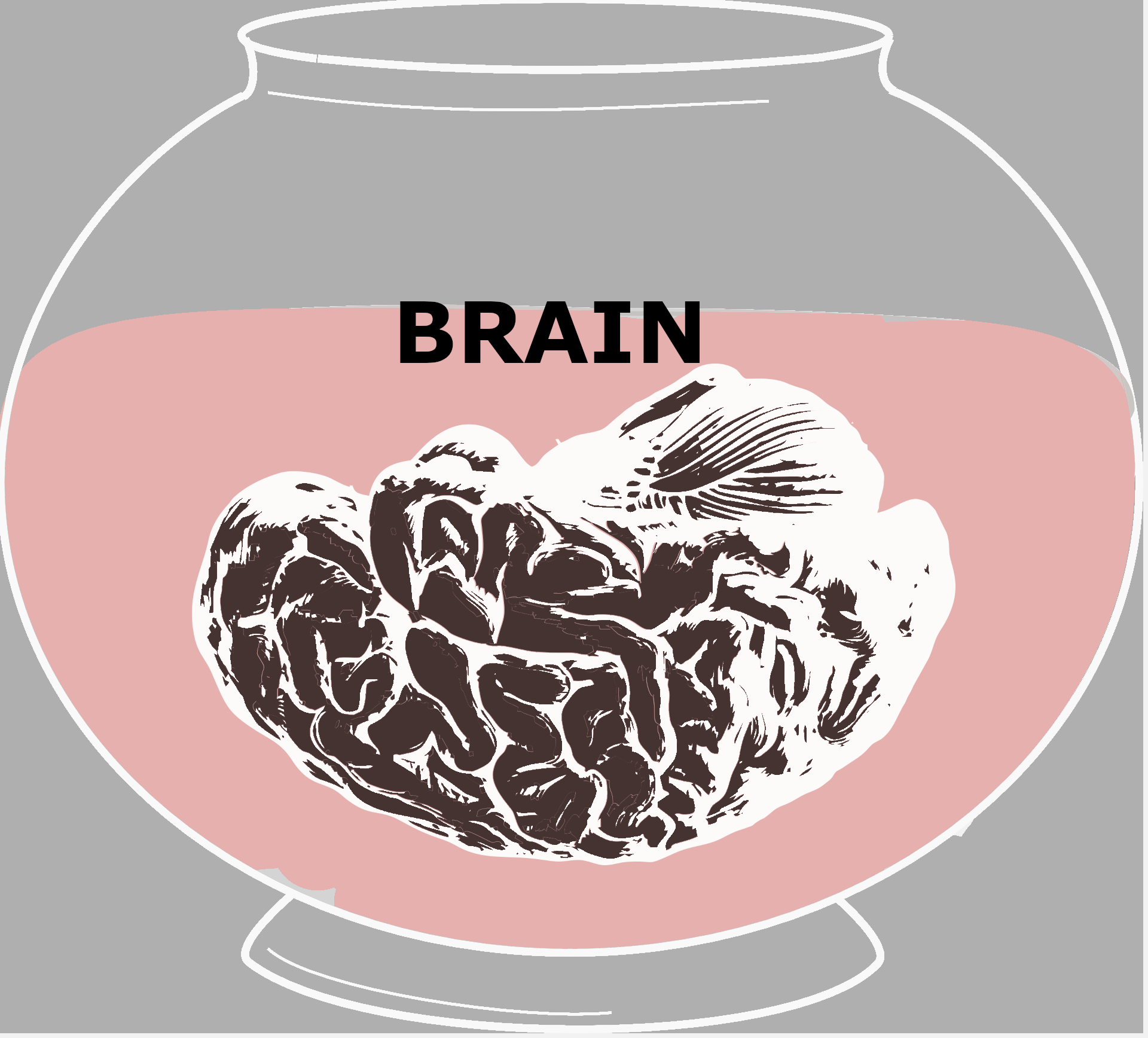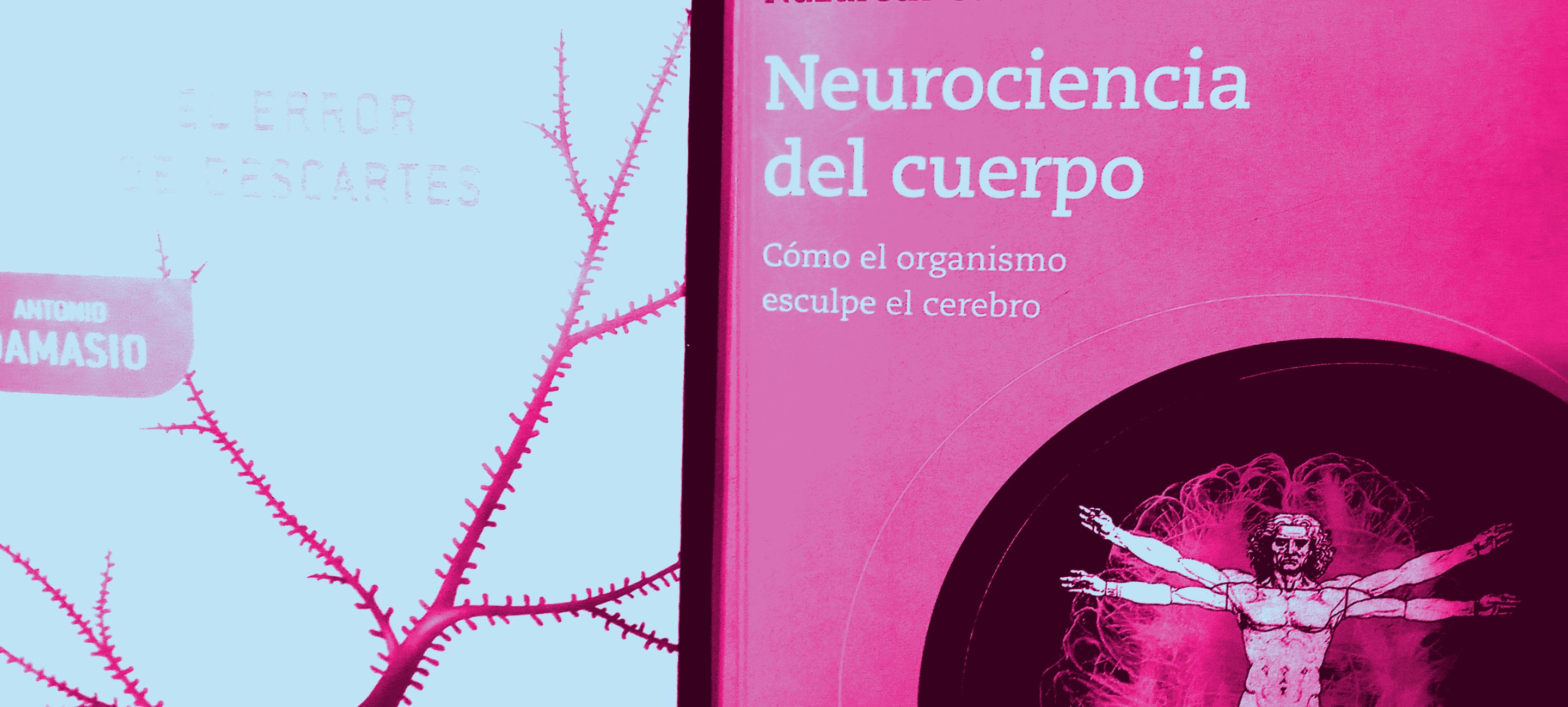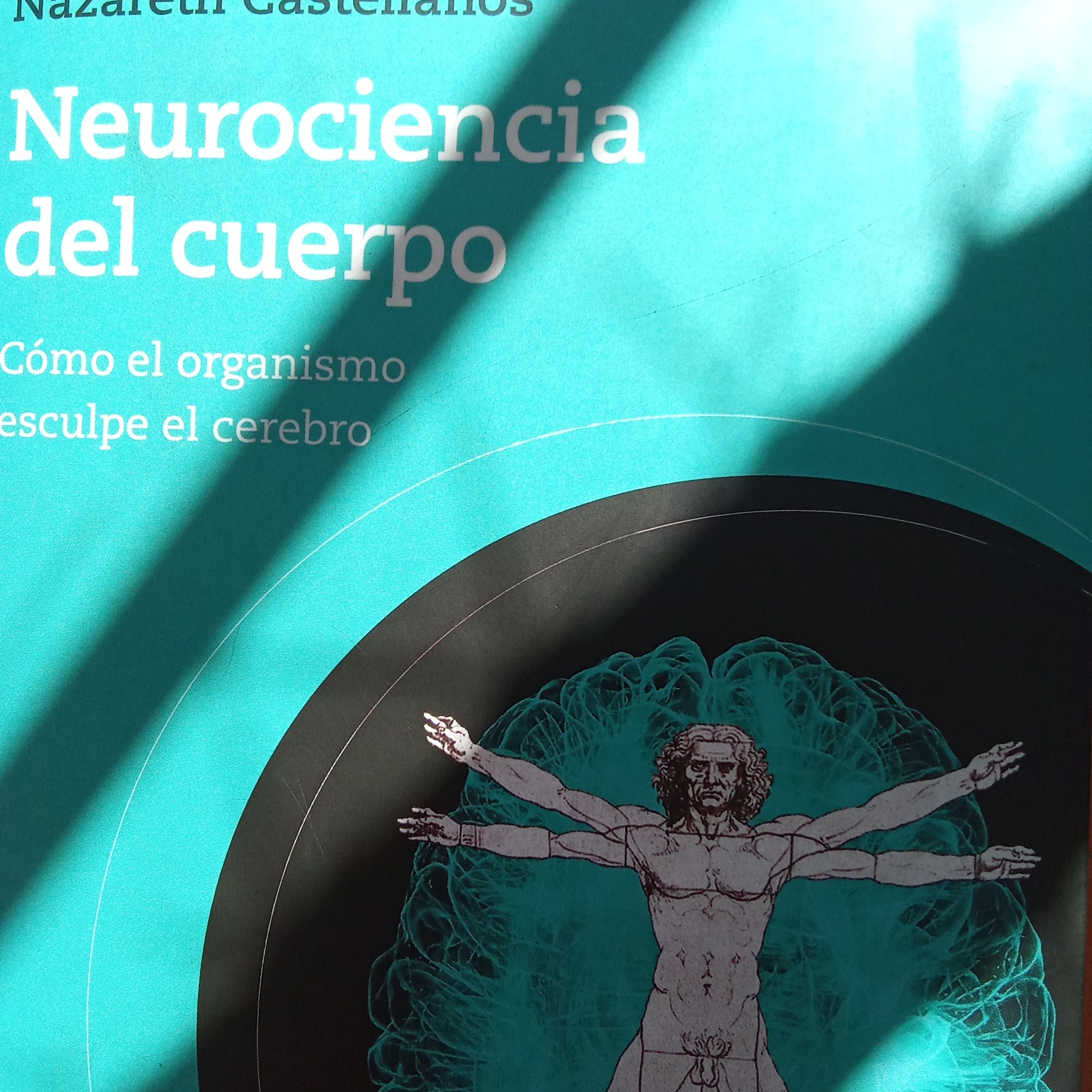Saludos a toda la comunidad humanista.
Escribía mi estimado y amigo @felixmarranz sobre los libros que influyeron en su vida. Nos explicaba que había elegido este tema después de pasar por la publicación de @eudemo.
También me invitaba a participar en la Comunidad. Esta es mi respuesta a la invitación de @felixmarranz, amigo al que le dedico esta publicación. Esta andadura por Hive hubiera sido muy diferente sin su apoyo y sin todo el cariño que me ha dado.

Greetings to the entire humanist community.
My dear friend @felixmarranz wrote about the books that influenced his life. He explained that he had chosen this topic after going through the publication of @eudemo.
He also invited me to participate in the Community. This is my response to the invitation from @felixmarranz, a friend to whom I dedicate this post. This journey through Hive would have been very different without his support and all the love he has given me.


El caso es que hoy, en el año 2022, está sólidamente reconocida y aceptada la influencia del organismo sobre el cerebro.
Nazareth Castellanos
Elegir un libro que me haya influido en mi vida no me resulta sencillo. En la vida hay momentos, y no diría que un libro o un texto para cada momento, pero se aproxima mucho a la realidad. Para aumentar la complejidad del tema, en cada etapa de la vida nuestros intereses no son un monolito. Por tanto, a cada interés le puede corresponder una lectura inspiradora.
De entre este mar de complejidad por la que navegó mi cerebro surgió un título: “El Error de Descartes” de Damasio (1994). He dicho ¿Cerebro? ¿Por qué el cerebro?
Han pasado tres décadas desde la publicación de “El Error de Descartes” y seguimos hablando del cerebro como el centro del pensamiento, el comando ejecutor de nuestras acciones, quedando el cuerpo reducido a ese elemento pasivo sujeto a los caprichos del cerebro.
En esta visión clásica, si tomamos a un/a ciclista como metáfora entre la relación entre el cerebro y el cuerpo, el cerebro sería el ciclista y la bicicleta el cuerpo. Sin embargo, la moderna neurociencia, las últimas décadas de investigación, nos van diciendo que el sujeto pensante no es el cerebro: es el organismo, como un todo. No hay separación entre ciclista y bicicleta.
Desde 1994 se han ido publicado cientos de artículos y libros que ponen en cuestión el “cerebro-centrismo”, uno de estos libros es “Neurociencia del cuerpo: cómo el organismo esculpe el cerebro” de Nazareth Castellanos (2022). Libro que es mi elección para presentarlo en esta publicación.
Nazareth Castellanos es una investigadora y científica, licenciada en Física Teórica y doctora en Neurociencia por la Facultad de Medicina de la Universidad Autónoma de Madrid. Durante las últimas dos décadas, se ha dedicado a estudiar la relación entre el cerebro y el intestino, el corazón, con la respiración o la postura corporal. Y cómo la meditación influye en la relación entre el cerebro y el resto del organismo.


The fact is that today, in the year 2022, the influence of the organism on the brain is solidly recognized and accepted.
Nazareth Castellanos
Choosing a book that has influenced me in my life is not easy. In life there are moments, and I would not say a book or a text for every moment, but it is very close to reality. To add to the complexity of the subject, at each stage of life for any of us, our interests are not a monolith. Therefore, each interest may correspond to an inspirational reading.
From this sea of complexity through which my brain navigated, a title emerged: “Descartes' Error” by Damasio (1994). I said Brain? Why the brain?
Three decades have passed since the publication of “Descartes' Error” and we still speak of the brain as the center of thought, the executing command of our actions, the body being reduced to that passive element subject to the whims of the brain.
In this classical view, if we take a cyclist as a metaphor for the relationship between the brain and the body, the brain would be the cyclist and the bicycle the body. However, modern neuroscience, the last decades of research, are telling us that the thinking subject is not the brain: it is the organism, as a whole. There is no separation between cyclist and bicycle.
Since 1994 hundreds of articles and books have been published that question the “brain-centrism”, one of these books is “Neuroscience of the body: how the organism sculpts the brain” by Nazareth Castellanos (2022). Book that is my choice to present in this publication.
Nazareth Castellanos is a researcher and scientist, with a degree in Theoretical Physics and a PhD in Neuroscience from the Faculty of Medicine of the Autonomous University of Madrid. During the last two decades, she has been studying the relationship between the brain and the intestine, the heart, breathing and body posture. And how meditation influences the relationship between the brain and the rest of the organism.

La neurociencia del cuerpo
El libro de Nazareth Castellanos tiene dos grandes virtudes, está escrito de forma sencilla y recoge las últimos estudios sobre la relación entre el cerebro y el resto del organismo, cuyos resultados pueden ser sorprendentes.
Aunque la psicología académica sigue empeñada en sostenener la “metáfora del ordenador”, la investigación desmiente esta metáfora y sus implicaciones. Las metáforas guían la investigación en ciencia, las malas metáforas, limitan el conocimiento científico y la búsqueda de la verdad. No somos un ordenador, ni tenemos ningún aprecido con los ordenadores. En este caso, la metáfora del "hombre máquina" también puede afectar a la salud de las personas de forma negativa.

The neuroscience of the body
The book by Nazareth Castellanos has two great virtues, it is written in a simple way and gathers the latest studies on the relationship between the brain and the rest of the organism, whose results can be surprising.
Although academic psychology is still determined to maintain the “metaphor of the computer”, research disproves this metaphor and its implications. Metaphors guide research in science; bad metaphors limit scientific knowledge and the search for truth. We are not a computer, nor do we have any relationship with computers. In this case, the “machine man” metaphor can also affect people's health in a negative way.


Energía oscura
Durante un año se estudió en el Laboratorio de Neurociencia Cognitiva y Computacional de la Universidad Complutense de Madrid la actividad del cerebro. La teoría clásica predice que cuando estamos en reposo, sin hacer ninguna tarea manual o intelectual, el cerebro debería consumir muy poca energía. Como cuando el ciclista deja de pedalear: el gasto calórico disminuye de forma patente, el gasto de oxígeno también desciende reduciendo todavía más el gasto calórico.
Sin embargo, no ocurre lo mismo con el cerebro que no “pedalea”. En esta investigación se observó que entre el 60 y el 80% del consumo energético del cerebro no tiene relación con lo que sucede en el exterior. Que al ejecutar una tarea como recordar un viaje el cerebro sólo consume un 5% más de energía. Es decir, la mayor parte de la energía que consume el cerebro la destina a “escuchar” el cuerpo.
Por tanto, el cerebro no es un sistema de repuestas al mundo, que cuando no hace nada se apaga como un ordenador. No es una máquina, es otra cosa. No solamente no es una máquina que no se puede apagar (sólo la muerte tiene la capacidad de apretar el interruptor), además, al escuchar el cuerpo evoca estados que no son despertados de forma voluntaria.

Dark energy
For a year, the Cognitive and Computational Neuroscience Laboratory at the Complutense University of Madrid studied the activity of the brain. Classical theory predicts that when we are at rest, without doing any manual or intellectual task, the brain should consume very little energy. As when the cyclist stops pedaling: caloric expenditure decreases markedly, oxygen expenditure also decreases, further reducing caloric expenditure.
However, the same is not true for the brain that does not “pedal”. In this research it was observed that between 60 and 80% of the brain's energy consumption is not related to what is happening outside. When performing a task such as remembering a trip, the brain consumes only 5% more energy. In other words, most of the energy consumed by the brain is used to “listen” to the body.
Therefore, the brain is not a system of responses to the world, which, when it does nothing, shuts down like a computer. It is not a machine, it is something else. Not only is it not a machine that cannot be turned off (only death has the ability to flip the switch), but by listening the body evokes states that are not voluntarily awakened.

Las emociones y el cuerpo
Pongamos el caso del miedo. Supongamos que un suceso que el organismo valora como peligroso provoca una reacción somática. El cerebro está atento a lo que le dice el corazón, los pulmones, el intestino, el torrente de hormonas desencadenado, etc., comienza un procesamiento de la información de abajo a arriba. Desde las estructuras más primitivas hasta las más modernas. El sistema límbico comienza a procesar esta información interna y, unos segundos después, esa información no consciente llega a la corteza, haciéndose consciente, tenemos miedo, y se produce la reacción de ataque o huida.
Damasio diferencia entre la emoción y el sentimiento. El sentimiento sólo sería la experiencia mental y consciente de los estados del cuerpo. Por tanto, los sentimientos llegan a la conciencia como un reflejo de las emociones que son inconscientes.
El hecho de que todo este proceso se inicie de forma automática, y que tarde un tiempo hasta que se hace consciente, podría indicar que no tenemos ningún control sobre nuestras emociones. Incluso que el libre albedrío es sólo una ilusión, que lo que creemos que son decisiones voluntarias sólo son la culminación de un proceso/s inconsciente e involuntario.
La respuesta de Nazareth Castellanos, ante este cuestionamiento del libre albedrío y de la responsabilidad individual, nos remite de nuevo al cuerpo.

Emotions and the body
Let us take the case of fear. Let us suppose that an event that the organism evaluates as dangerous provokes a somatic reaction. The brain is attentive to what the heart, the lungs, the intestine, the stream of hormones triggered, etc., begins a bottom-up processing of the information. From the most primitive to the most modern structures. The limbic system begins to process this internal information and, a few seconds later, this non-conscious information reaches the cortex, becoming conscious, we are afraid, and the attack or flight reaction occurs.
Damasio differentiates between emotion and feeling. Feeling would only be the mental and conscious experience of the states of the body. Therefore, feelings come to consciousness as a reflection of emotions that are unconscious.
The fact that this whole process starts automatically, and that it takes some time before it becomes conscious, could indicate that we have no control over our emotions. Even that free will is only an illusion, that what we believe to be voluntary decisions are only the culmination of an unconscious and involuntary process.
Nazareth Castellanos response to this questioning of free will and individual responsibility brings us back to the body.


El cuerpo y la modulación de las emociones
“Yo creo que el cuerpo no nos dice a dónde ir, nos dice donde estamos, que es más importante.”
Nazareth Castellanos
Una respuesta, ante la cuestión de la ausencia de la libertad, es la toma de conciencia corporal. Con anterioridad a volverse consciente, la emoción se manifiesta a través de las sensaciones corporales. Por tanto, una forma de modular o controlar la emoción es el desarrollo de una conciencia corporal que nos permita adelantarnos al sentimiento, a la expresión consciente de la emoción (y a nuestro secuestro por la emoción).
Dos formas de desarrollar la conciencia corporal son la meditación sobre las sensaciones y mediante la toma de conciencia de la postura corporal.
Enfocar en el cuerpo, notar si la respiración es profunda o superficial. Comenzar por la punta de los dedos de de los pies, ¿Qué sensaciones tengo de cada uno?, Pasamos por los tobillos, ¿están rígidos?¿Son flexibles? Seguimos por las rodillas hasta la cadera y seguimos subiendo, paso a paso, hasta la coronilla: brazos, muñecas, manos, pecho, cuello, mandíbula, ojos, frente,…, acompañar este escaneo con una respiración consciente y profunda. Lo fundamental es parar y poner la atención en las sensaciones… si hay tensión, respirar, mover de forma consciente y relajar la zona.
El cuidado de la postura corporal también es importante, ya que las sensaciones que recibimos de nuestra postura influyen en el cerebro. Una postura encorvada influye en la percepción de lo que vemos de forma negativa. La postura de la boca, por ejemplo una sonrisa influye de forma positiva.
El Tai-chi, el yoga, y también el baile, son grandes amigos del bienestar emocional. No quiero dejar de mencionar el papel del intestino, de la microbiota, como modulador de las emociones.
Cada día que pasa, se va completando cada vez más el conocimiento sobre el funcionamiento de la mente y la conciencia. Sobre la relación del cerebro con el intestino, el estómago, los pulmones y el corazón. En 2024 podemos afirmar sin ninguna duda que el paradigma de la “metáfora del ordenador” es un error. Un error impermeable a la evidencia experimental.

The body and the modulation of emotions
“I believe that the body doesn't tell us where to go, it tells us where we are, which is more important.”
Nazareth Castellanos
One answer to the question of possible unfreedom is bodily awareness. Therefore, one way to modulate or control emotion is to develop a body awareness that allows us to anticipate the feeling, the conscious expression of emotion (and our abduction by emotion).
Two ways to develop body awareness are meditation on sensations and through awareness of body posture.
Focus on the body, noticing whether the breath is deep or shallow. Start at the tips of the toes, what sensations do I have of each toe, go to the ankles, are they stiff, are they flexible? We continue through the knees to the hips and go up, step by step, to the crown of the head: arms, wrists, hands, chest, neck, jaw, eyes, forehead, ..., accompany this scanning with a conscious and deep breathing. The fundamental thing is to stop and pay attention to the sensations... if there is tension, breathe, move consciously and relax the area.
Taking care of body posture is also important, as the sensations we receive from our posture influence the brain. A slouched posture influences the perception of what we see in a negative way. The posture of the mouth, for example a smile, has a positive influence.
Tai-chi, yoga, and also dancing are great friends of emotional well-being. I do not want to forget to mention the role of the intestine, of the microbiota, as a modulator of emotions.
With each passing day, the knowledge about the functioning of the mind and consciousness is becoming more and more complete. About the relationship of the brain with the gut, the stomach, the lungs and the heart. In 2024 we can affirm without any doubt that the paradigm of the “computer metaphor” is an error. An error impervious to experimental evidence.


Neurociencia y psicoterapia
Mi acercamiento a la neurociencia del cuerpo no fue una casualidad. En el campo de la psicoterapia, de forma explícita, en otras ocasionas de forma implícita, el cuerpo siempre ha estado presente.
Debido a que mi formación inicial se dio en el campo de las terapias corporales, los hallazgos de Damasio me interesaron de forma particular, confirmaban (es mi opinión) la afirmación de Wilhelm Reich sobre el lugar de la memoria: el cuerpo.
Eso se veía en la clínica todos los días, empezado por la lectura del arco de lo pies, si el arco era alto, muy probablemente, podíamos estar ante un paciente con una gran necesidad de control sobre sus emociones y su comportamiento. En fin, que el cuerpo nunca miente... aunque el paciente se auto-engañe.
Como diría la moderna neurociencia: el cuerpo conoce muchas cosas que la mente (y la psicología académica) desconoce.

Neuroscience and psychotherapy
My approach to the neuroscience of the body was not by chance. In the field of psychotherapy, explicitly, at other times implicitly, the body has always been present.
Because my initial training was in the field of body therapies, Damasio's findings interested me in a particular way, they confirmed (in my opinion) Wilhelm Reich's statement about the place of memory: the body.
This was seen in the clinic every day, starting with the reading of the arch of the feet, if the arch was high, most likely, we could be dealing with a patient with a great need for control over his emotions and behavior. In short, the body never lies... even if the patient is self-deceived.
As modern neuroscience would say: the body knows many things that the mind (and academic psychology) does not.

Banner edited with Canva pro.
SOURCE/FUENTE: Avatar created with AI Ideogram / Avatar creado con IA Ideogram

Prompt
silueta de aviador hecha con cordones blancos, poster, 3d render, conceptual art
Gifs, imágenes y separador:
SOURCE/FUENTE: Aviator created with AI Ideogram / Aviador creado con IA Ideogram
Prompt
silueta de aviador hecha con cordones blancos, 3d render, poster

Fotografías de mi propiedad realizadas con mi teléfono móvil Redmi A2 y editadas con pixlr.
Traducción al inglés DeepL
Photographs of my property taken with my Redmi A2 cell phone and edited with pixlr.
English translation DeepL
Posted Using InLeo Alpha